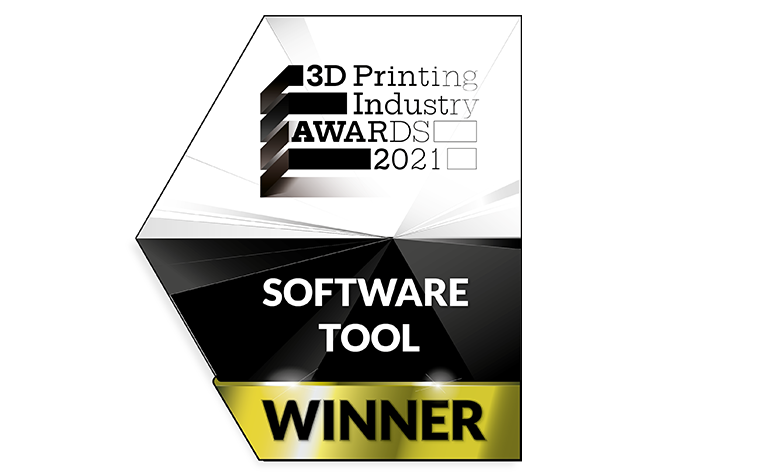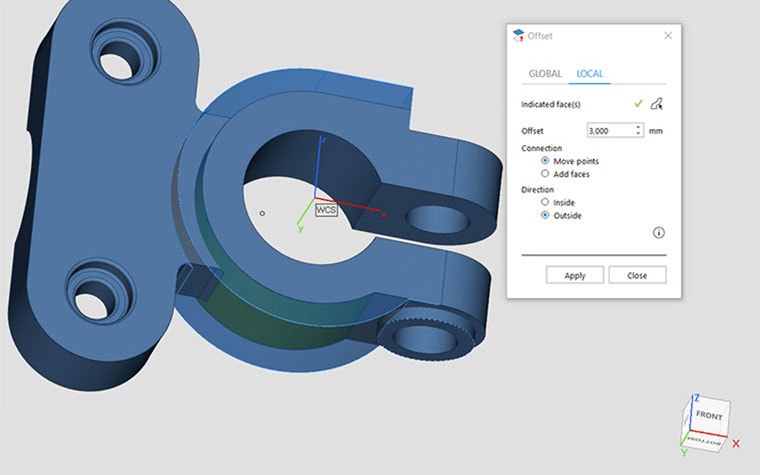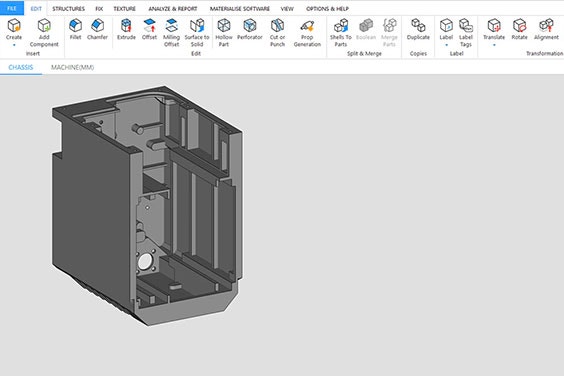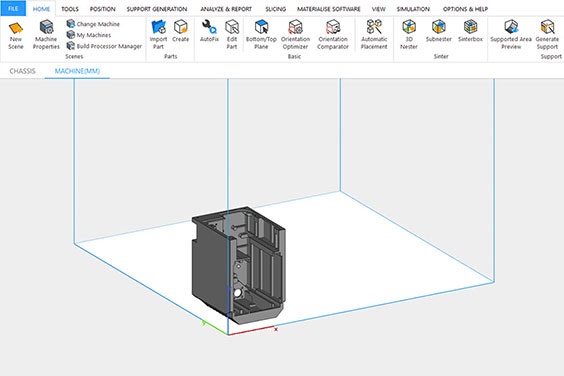EXPERT INSIGHT
Best of Both Worlds: File Preparation with CAD and Mesh Using Magics

For years, there have been conversations within the 3D printing industry on CAD and mesh workflows and which of the two is best. Many believe that CAD is the only way forward — completely removing mesh workflows from the file preparation process. But we disagree. There are major benefits in using each format. That’s why we’ll be combining both into a seamless workflow within our Magics software solution — our industry-leading data and build preparation software that recently earned Software Tool of the Year at the 3D printing industry awards.


How will this improve your workflow?
Bringing together CAD and mesh during file preparation is like peanut butter and jelly — great on their own, but even better together.
For example, CAD is known for its impressive capabilities while editing parts because it’s of a higher resolution than mesh. It will be seamless to go from design optimization software to file preparation with Magics and complete tasks such as enhancing parts, creating fillets, and adding holes.


However, there are also clear benefits when using mesh while preparing parts for 3D printing. It’s crucial to complete certain steps with mesh, especially during build preparation and for applications with organic textures. It is also very powerful for operations where you want to ignore the complexity of designs, such as the wrapping of a complete engine assembly. Mesh contains all the information about the inside and outside of 3D models necessary to slice parts and begin 3D printing.
In order to prepare parts for printing, the optimal workflow should seamlessly integrate both of these formats. By continuing to work with CAD for longer, users will experience boosted productivity and have cleaner, more accurate files.
“We’re on the road to providing enhanced hybrid workflows within Magics, and the future versions of our software will reflect this objective.”
— Egwin Bovyn, Global Market Manager for 3D Print Service Providers, Materialise
Plus, since many subcontractors and customers of 3D printing service providers are more familiar with CAD than mesh files, communication will be smoother than ever. Data that these service providers receive are often far from ideal for 3D printing. But with this CAD functionality, you can quickly and easily iterate on parts to optimize them for printing, then check the adapted geometry alongside your customers. It’s a seamless bridge between CAM design packages and additive manufacturing workflows without losing parts’ data integrity.
What will this new integration look like?
Starting with the Magics 26 release in spring 2022, users of our data and build preparation software will be able to experience the best of both worlds. We’ll introduce a workspace within Magics where users can use CAD and mesh for part preparation. There will also be a workspace dedicated to build preparation, where users can leverage the mesh capabilities. These workspaces enable data preppers to prepare files with optimized workflows, all while ensuring seamless transitions along the way.


Magics 26 will introduce a part preparation workspace (left) and a build preparation workspace (right).
“Our CAD functionalities are tried-and-true because the part preparation workspace is powered by the industry-leading Parasolid® software,” says Egwin Bovyn, Global Market Manager for 3D Print Service Providers at Materialise. “With Parasolid, users can add or change features on the parts a lot faster and such increase productivity while preparing parts for the printing process.”
Parasolid is the world’s premier 3D geometric modeling kernel. By building upon its Convergent Modeling™ technology, we’re combining two powerful and trusted solutions — Parasolid and Magics — to enable users to benefit from the best of both worlds.
“The way forward is not eradicating mesh in favor of CAD — there are applications and operations within data and build preparation that greatly benefit from mesh,” concludes Egwin. “This is why we’re bringing a solution to our next version of Magics — and it’s only the beginning. We’re committed to overcoming the challenges the industry faces by using mesh processes exclusively. We’re on the road to providing enhanced hybrid workflows within Magics, and the future versions of our software will reflect this objective.”
Share on:
You might also like
Never miss a story like this. Get curated content delivered straight to your inbox.
